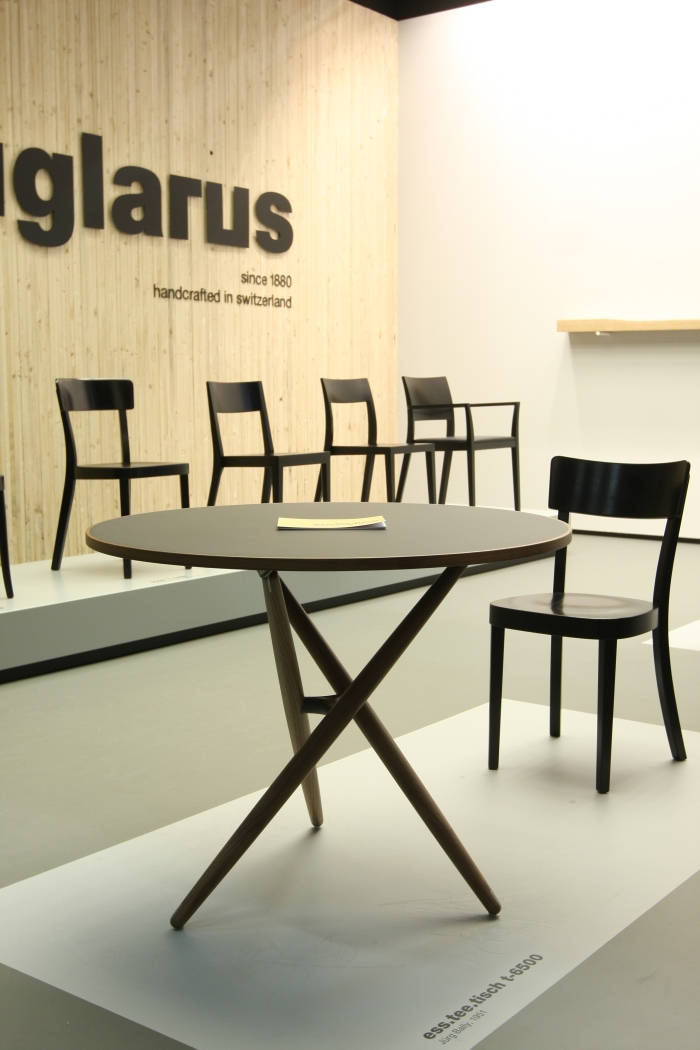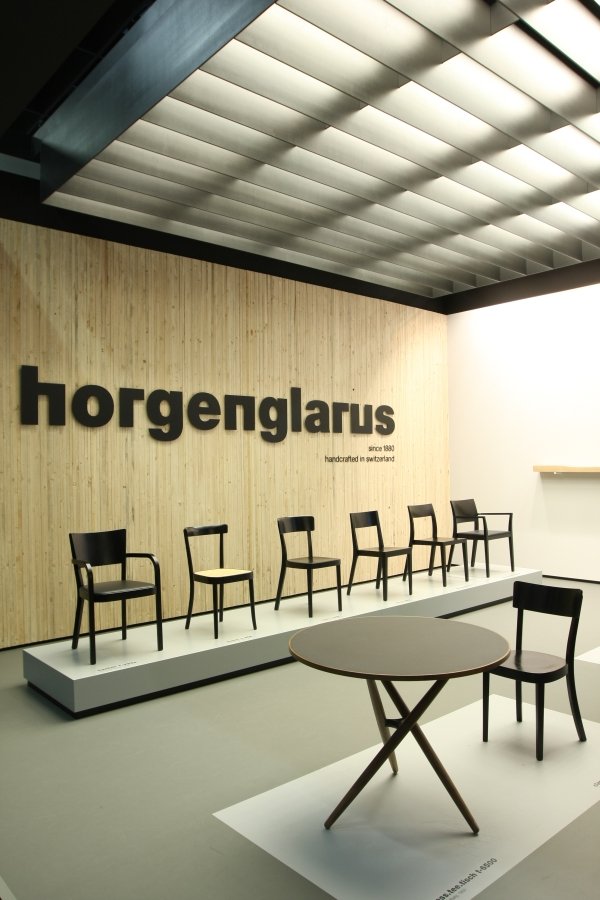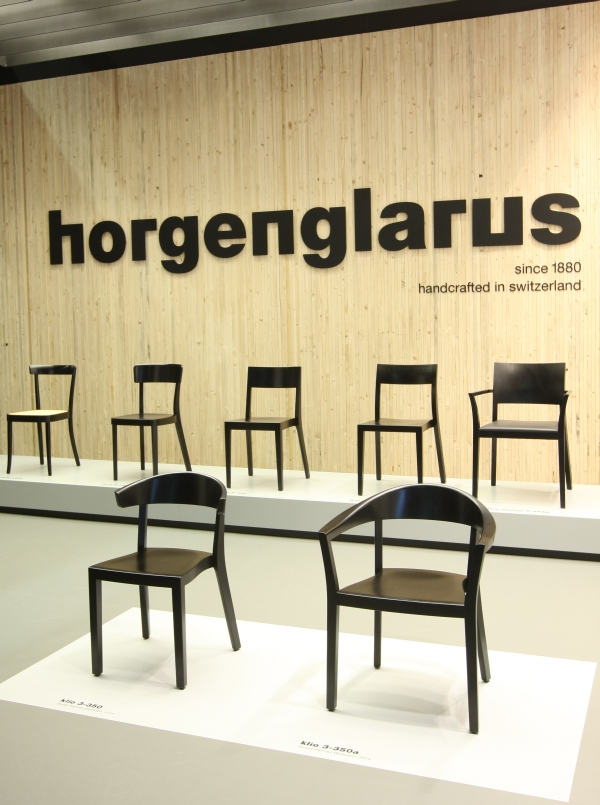In our post on the Drawers Table by 45 Kilo for My Kilos we noted "any product that can appear as fresh, contemporary and universally deployable six years after its release as it did on day one is, as a general rule, good."
And what about a table which appears as fresh, contemporary and universally deployable 61 years after its release as it did on day one?
Such is the case with the ess.tee.tisch t-6500 from Swiss manufacturer Horgenglarus.
Originally launched by Horgenglarus in 1954 as the S.T. Tisch, the table was designed by Swiss architect Jürg Bally and features a height adjusting mechanism inspired by the grace of the Swiss watch making tradition and which allows for an effortless raising and lowering of the table top and so the transformation from side table to dining table. Or most any height inbetween.
An effortless raising and lowering mechanism as sweet and luxurious as the Swiss chocolate making tradition, one could say.
In 2013 Horgenglarus commissioned Zurich based designer Daniel Hunziker to "freshen up" the S.T. Tisch, the basic form and functionality remain exactly as with the original, the changes are largely in terms of materials, and the re-named ess.tee.tisch t-6500 is making its international début at IMM Cologne.
We first saw the ess.tee.tisch t-6500 in April 2014 and having been reacquainted with it in Cologne remain every bit as fascinated and enamoured by it; not only on account of its beguiling aesthetic but for all the effortless way Jürg Bally integrated such as sophisticated, logical, technology into such a beguiling form to create a genuinely useful, functional, object.
You have to go to an awful lot of contemporary design exhibitions to find anything to match what Jürg Bally achieved.

In addition to ess.tee.tisch t-6500 Horgenglarus are also presenting Klio a new chair by Studio Hannes Wettstein. And a chair which in many ways embodies the Horgenglarus philosophy.
Based on a chair typology dating from the Horgenglarus catalogue of 1928, the extended backrest of each Klio armchair begins life as a ca. 13 kilo block of beech or oak sourced, as with all wood used by Horgenglarus, from the forests of the Jura mountains.
After being bent and hung in the drying chamber for three weeks, the block weighs just 11 kilos; and after the subsequent CNC-milling and sanding "just" 2.1 kilos.
Which although relatively light is still a considerable weight in a world where chairs are getting ever lighter. But then the furniture industry needs light chairs to reduce shipping costs when the chairs are dispatched globally in bulk. Klio will never be dispatched in bulk, or at least not in the sort of bulk volumes in which other chairs from other manufacturers are shipped: rather, and as with all Horgenglarus products, will remain a product for those who appreciate the durability, charm, honesty and individual character of furniture created with a focus on craftsmanship and an understanding of the materials employed rather than the demands of the market and/or the current fashion.
And the missing 9 kilos?
The wood shavings resulting from the milling process are used to fire the factory furnaces and so heat the workshops. And of course the drying chambers.
Not only the most responsible and sustainable decision, but also the easiest. And as such, best.

Despite being one of the true pioneers of industrial furniture production, one of the companies who propagated the idea of cooperating with architects on furniture design projects and with the 1-380 manufacturer of a chair every bit as ubiquitous, and consequently every bit as anonymous, as Michael Thonet's Chair 14, it is very easy to ignore Horgenglarus at a fair such as IMM.
They don't do anything spectacular. They do however do good. Quality. Reliability.
And with the re-release of the ess.tee.tisch t-6500 prove that they also do designs that remain relevant, exciting and contemporary over generations.

